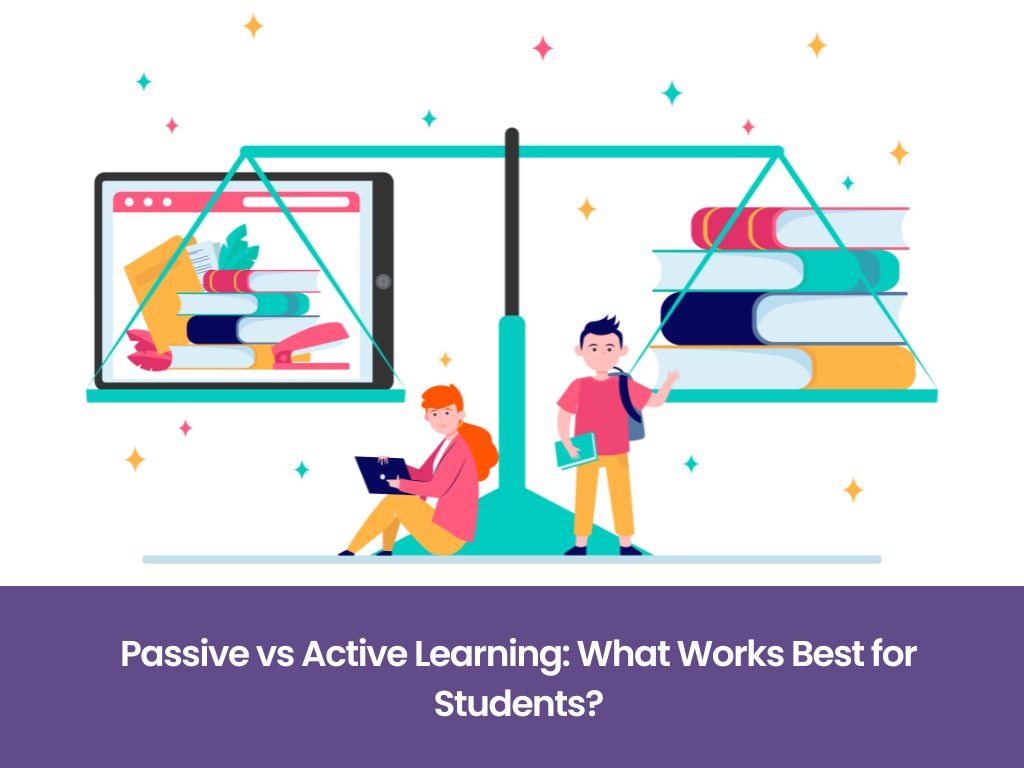Passive vs Active Learning: What Works Best for Students?
posted on May 26, 2025
Explore the key differences between passive and active learning. Discover which method boosts student success and why schools are shifting their approach.

Introduction
In today's rapidly evolving educational landscape, how students learn is just as important as what they learn. Among the core concepts reshaping modern education are passive and active learning. These two approaches represent fundamentally different styles of instruction and engagement, each with its own strengths and weaknesses. Understanding the distinction between them is crucial for parents, educators, and students striving to make the most of the learning experience.
At institutions that prioritize forward-thinking methodologies—such as Bgs Vijnatham, considered one of the best schools in Noida Extension—the balance between traditional and innovative teaching styles is key to fostering a more effective and enriching educational journey.
What is Passive Learning?
Passive learning is the traditional method of education that many of us grew up with. It involves receiving information from a teacher, book, or video without direct interaction or active participation. In this model, the teacher typically leads the session, delivers content, and the student listens, reads, or takes notes.
This method is structured, predictable, and often efficient when it comes to delivering a large amount of information in a short period of time. For instance, during a history lecture, students may learn about historical dates, events, and figures simply by listening and jotting down facts. While it allows teachers to cover a lot of content quickly, it doesn’t always translate to deep understanding or long-term retention.
Drawbacks of Passive Learning
One of the biggest challenges with passive learning is that it often leads to surface-level understanding. Students may memorize information for a test but struggle to apply it in real-world contexts. The lack of interaction or critical engagement with the material can also result in boredom or lack of motivation. Learners in passive settings are typically not encouraged to question or explore topics beyond what’s presented.
Moreover, research shows that retention rates are significantly lower when students are simply listening or watching versus when they’re actively involved. This has prompted educators to seek more engaging alternatives that promote deeper learning.
What is Active Learning?
In contrast, active learning places students at the center of the educational experience. Instead of being passive recipients of information, they become active participants—asking questions, solving problems, collaborating with peers, and applying concepts to real-life scenarios.
Examples of active learning include classroom discussions, group projects, hands-on experiments, case studies, role-playing exercises, and interactive digital tools. The idea is to get students to think critically, reflect on what they’re learning, and take responsibility for their understanding.
Let’s consider a science class: rather than simply reading about the laws of motion, students might design a small experiment to observe these laws in action. This kind of engagement not only reinforces theoretical knowledge but also makes the learning experience more enjoyable and memorable.
Why Active Learning Matters
Active learning is often more effective because it taps into multiple aspects of the learning process. When students talk about what they’ve learned, teach it to others, or use it to solve a problem, they reinforce their understanding in powerful ways.
Furthermore, this method develops skills that go beyond academics. Communication, teamwork, critical thinking, and adaptability are all nurtured through active learning activities. These are essential skills in today’s workforce, making this approach even more valuable for long-term success.
Limitations of Active Learning
Despite its advantages, active learning isn’t a one-size-fits-all solution. It requires thoughtful planning, time, and resources to implement effectively. Not all topics or lessons lend themselves well to group discussions or hands-on activities. In some cases, especially when introducing new or complex concepts, a more traditional approach might be necessary to establish a strong foundation.
Additionally, not all students immediately adapt to this method. Some may feel uncomfortable speaking in groups or unsure of how to approach open-ended tasks. That’s why a balance between passive and active learning is often the most effective strategy.
Blending the Two for Better Learning
The most successful learning environments often combine elements of both passive and active approaches. For example, a teacher might begin a lesson with a short lecture to introduce key concepts, followed by a group activity that allows students to explore those ideas in more depth. Reading assignments can be paired with classroom debates, while videos can be supplemented with hands-on practice.
This blended approach acknowledges that different students learn in different ways. While some may benefit from listening and note-taking, others thrive when they can engage, discuss, or experiment. Teachers who can switch between modes based on the topic and the learners’ needs tend to see better outcomes across the board.
Conclusion
Passive and active learning represent two ends of the educational spectrum. While passive learning emphasizes listening and memorization, active learning promotes engagement, critical thinking, and application. Each has its place in the classroom, but today’s learners benefit most when both approaches are used thoughtfully.
As education continues to evolve, schools that prioritize active engagement and adaptability will better prepare students for the challenges of tomorrow. Whether you’re a parent choosing a school, a teacher refining your methods, or a student looking to get more out of your studies, understanding the difference between passive and active learning is a key step toward success.